您好,登錄后才能下訂單哦!
您好,登錄后才能下訂單哦!
本篇內容介紹了“C++11可變參數的模板怎么寫”的有關知識,在實際案例的操作過程中,不少人都會遇到這樣的困境,接下來就讓小編帶領大家學習一下如何處理這些情況吧!希望大家仔細閱讀,能夠學有所成!
在C++11之前,類模板和函數模板只能含有固定數量的模板參數。C++11增強了模板功能,允許模板定義中包含0到任意個模板參數,這就是可變參數模板。
可變參數模板和普通模板的語義是一樣的,只是寫法上稍有區別,聲明可變參數模板時需要在typename或class后面帶上省略號“…”:
template<class ... T> void func(T ... args)//T叫模板參數包,args叫函數參數包
{//可變參數模板函數
}
func(); // OK:args不含有任何實參
func(1); // OK:args含有一個實參:int
func(2, 1.0); // OK:args含有兩個實參int和doubleT叫模板參數包,args叫函數參數包。
省略號“…”的作用有兩個:
聲明一個參數包,這個參數包中可以包含0到任意個模板參數
在模板定義的右邊,可以將參數包展開成一個一個獨立的參數
一個可變參數模板函數的定義如下:
#include <iostream>
using namespace std;
template<class ... T> void func(T ... args)
{//可變參數模板函數
//sizeof...(sizeof后面有3個小點)計算變參個數
cout << "num = " << sizeof...(args) << endl;
}
int main()
{
func(); // num = 0
func(1); // num = 1
func(2, 1.0); // num = 2
return 0;
}運行結果如下:
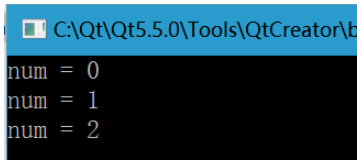
通過遞歸函數展開參數包,需要提供一個參數包展開的函數和一個遞歸終止函數。
#include <iostream>
using namespace std;
//遞歸終止函數
void debug()
{
cout << "empty\n";
}
//展開函數
template <class T, class ... Args>
void debug(T first, Args ... last)
{
cout << "parameter " << first << endl;
debug(last...);
}
int main()
{
debug(1, 2, 3, 4);
return 0;
}運行結果如下:
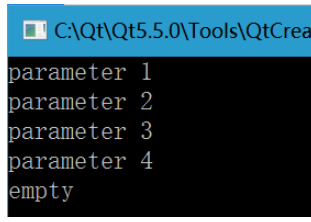
遞歸調用過程如下:
debug(1, 2, 3, 4); debug(2, 3, 4); debug(3, 4); debug(4); debug();
通過可變參數模板實現打印函數:
#include <iostream>
#include <stdexcept>
using namespace std;
void Debug(const char* s)
{
while (*s)
{
if (*s == '%' && *++s != '%')
{
throw runtime_error("invalid format string: missing arguments");
}
cout << *s++;
}
}
template<typename T, typename... Args>
void Debug(const char* s, T value, Args... args)
{
while (*s)
{
if (*s == '%' && *++s != '%')
{
cout << value;
return Debug(++s, args...);
}
cout << *s++;
}
throw runtime_error("extra arguments provided to Debug");
}
int main()
{
Debug("a = %d, b = %c, c = %s\n", 250, 'm', "mike");
return 0;
}運行結果如下:

#include <iostream>
using namespace std;
template <class T>
void print(T arg)
{
cout << arg << endl;
}
template <class ... Args>
void expand(Args ... args)
{
int a[] = { (print(args), 0)... };
}
int main()
{
expand(1, 2, 3, 4);
return 0;
}運行結果如下:
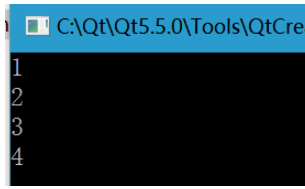
expand函數的逗號表達式:(print(args), 0), 也是按照這個執行順序,先執行print(args),再得到逗號表達式的結果0。
同時,通過初始化列表來初始化一個變長數組,{ (print(args), 0)… }將會展開成( (print(args1), 0), (print(args2), 0), (print(args3), 0), etc…), 最終會創建一個元素只都為0的數組int a[sizeof…(args)]。
可變參數模板類的展開一般需要定義2 ~ 3個類,包含類聲明和特化的模板類:
#include <iostream>
#include <typeinfo>
using namespace std;
template<typename... A> class BMW{}; // 變長模板的聲明
template<typename Head, typename... Tail> // 遞歸的偏特化定義
class BMW<Head, Tail...> : public BMW<Tail...>
{//當實例化對象時,則會引起基類的遞歸構造
public:
BMW()
{
printf("type: %s\n", typeid(Head).name());
}
Head head;
};
template<> class BMW<>{}; // 邊界條件
int main()
{
BMW<int, char, float> car;
return 0;
}運行結果如下:
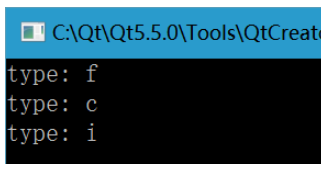
#include <iostream>
using namespace std;
template <long... nums> struct Multiply;// 變長模板的聲明
template <long first, long... last>
struct Multiply<first, last...> // 變長模板類
{
static const long val = first * Multiply<last...>::val;
};
template<>
struct Multiply<> // 邊界條件
{
static const long val = 1;
};
int main()
{
cout << Multiply<2, 3, 4, 5>::val << endl; // 120
return 0;
}運行結果如下:
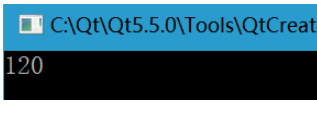
“C++11可變參數的模板怎么寫”的內容就介紹到這里了,感謝大家的閱讀。如果想了解更多行業相關的知識可以關注億速云網站,小編將為大家輸出更多高質量的實用文章!
免責聲明:本站發布的內容(圖片、視頻和文字)以原創、轉載和分享為主,文章觀點不代表本網站立場,如果涉及侵權請聯系站長郵箱:is@yisu.com進行舉報,并提供相關證據,一經查實,將立刻刪除涉嫌侵權內容。